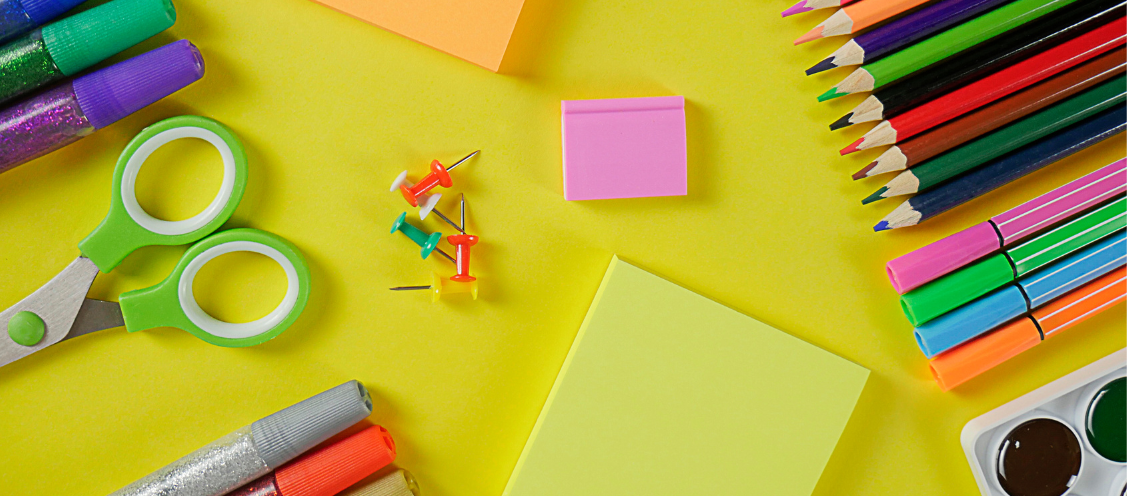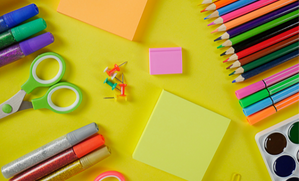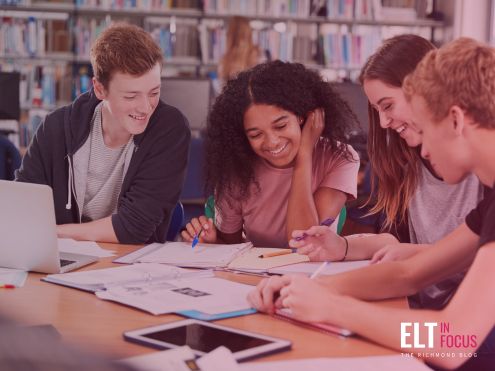Teachers have access to lots of resources and learners are used to using all kinds of great materials in their lessons. But some of the most effective resources are those that are generated by the learners themselves and which grow and evolve throughout the year as the class develop their language skills. Here are some ideas of such resources. They can be used with learners of all ages and levels.
A vocabulary box
In its simplest form, a vocabulary box is a box which learners fill with the new words and phrases they learn each lesson. The best way to set up a box is:
1. Find a suitable box, bag, jar or similar.
2. At the beginning of each lesson, appoint a ‘scribe’ to make a note of all the new vocabulary that comes up. Alternatively, you could do this in a corner of the board.
3. Towards the end of the lesson invite learners to choose a specific number of words and phrases to ‘keep’. These words are written on small pieces of card and placed in the box.
As the vocabulary box gets filled, it becomes a handy resource for recycling vocabulary. Learners can use the word cards to play games, to create sentences or short stories, to practise spelling or pronunciation, or just to check they understand what each item means and how they should use it.
E.g.
- Classify the words according to the number of syllables they have.
- Take three cards at random and make a sentence from them.
- Fast finishers can choose ten cards from the box. They have to use them to make invented titles for films, songs, paintings or books.
A green variation: Instead of having one ‘general’ vocabulary box, have a themed box for vocabulary which might be useful to talk about sustainability issues.
Discussion cards
Teachers often look for opportunities to give their learners more speaking practice. Discussion cards are ideal because they are low-prep and can be used in a number of ways to recycle language and develop speaking subskills such as fluency and accuracy. In younger learners they can also help develop social skills such as turn-taking and considering the opinions of others.
After teaching a unit in a course book, ask learners to collaborate in writing some discussion questions or statements that link back to the unit’s theme. In a unit on sport, some examples could be:
- Which three sports are the best to watch? Why?
- Which sports require the highest level of fitness?
- All children should do sport after school.
- International sporting events should be free to watch on national TV channels.
Then, learners choose a few examples and write each one on a card, leaving space below for some ‘useful language’. Learners, with your help, can add some useful language on the cards too. This can be prompts such as:
- I agree up to a point but …
- I’m sure I’m right about this because …
or vocabulary that has also appeared in the unit.
Store the cards in a box and add to them regularly throughout the course. As the card collection grows, learners can use them to have discussions in pairs or small groups. Don’t worry about the same card being used again and again. This is how language gets practiced and recycled and each discussion will be different from the last as learners’ language skills develop.
Our learning poster
Posters are a great resource for many classroom activities. A learner-generated poster that changes and grows throughout the course is especially useful as the language will be context-driven and the added creative element is motivating. While these posters are ideal for children and teenagers, they work with all ages and levels.
Start with the largest piece of paper or card you have available. Card is best as it needs to last for the whole course. Explain to learners that this is going to be ‘their’ poster, they can use it as a classroom resource, and that they will be adding to it throughout the course. Have a discussion to reach agreement on how the poster will be organised and used. This can be done in various ways, depending on the age and level of the learners. If necessary, have the discussion in their L1. Divide the poster into sections with headings: Here are a few ideas:
- words we find difficult to pronounce
- words we often misspell
- language structure examples
- useful expressions for compositions
- diagrams or drawings of lexical sets
- grammar rules
- tips for giving presentations
- recommended websites, books, podcasts etc. for improving English
At the end of each lesson, leave a few minutes for learners to update the poster. This might mean adding something or removing something. You might like to use sticky notes for things that are likely to be temporary and write or draw directly on the poster for more long-term items. Encourage everyone to get involved and invite the class ‘artists’ to decorate the poster.
Throughout the course, learners can use the poster as a reference and as support for whatever they are working on. Ideally the poster will stay on the classroom wall, but for teachers who might not have their own classroom, a rolled-up version that can be moved around will work too.
A suggestion box … and variations
Teachers should welcome suggestions and feedback from their learners but sometimes learners are reluctant to speak up. A suggestion box helps because it can be less public.
Make sure you have rules for how the box is used. Do you want suggestions to remain anonymous or would you prefer the learner to sign their name? Should the whole class see the suggestions, or are they just for the teacher? Whatever you decide, make sure everyone understands how to use the box and encourage active participation from all learners.
Here are some ideas of how suggestion boxes can be used. You can choose more than one use for the same box, of course.
- Invite learners to share their suggestions for a project theme or a school trip.
- At the end of a lesson, invite learners to share one thing they found challenging and one thing they found motivating.
- Ask learners to use the box to deposit a message (or a picture) about how they are going to practise English outside the classroom.
- Invite learners to use the box to let you know about anything that might be worrying them
Over to you!
I’m sure you have more ideas. We’d love to hear from you. Please share any ideas or photos of your learner-generated resources and tag us on Facebook and Instagram at @RichmondELTSpain.









